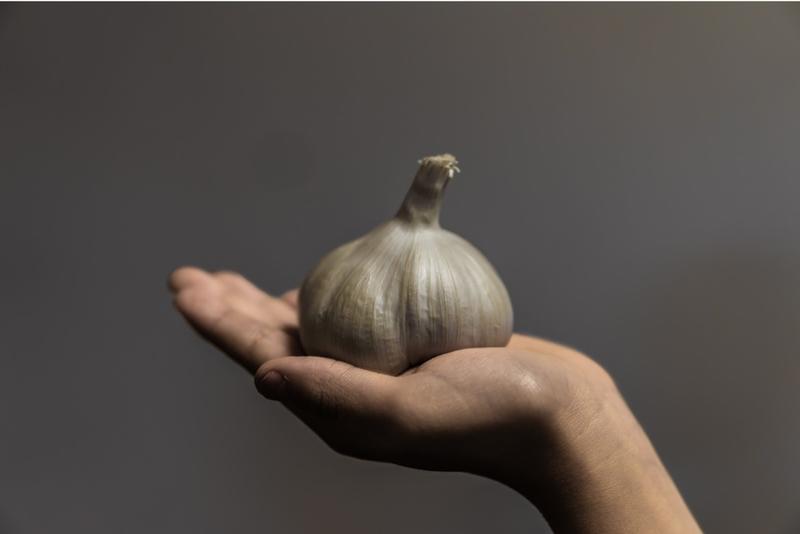How Much Garlic Powder Equals One Clove of Garlic?

Garlic is a versatile ingredient that can add flavor to almost any savory recipe. If you’re cooking with a recipe calls for a clove of garlic, but you don’t have fresh garlic, you can use 1/8 of a teaspoon of garlic powder as a substitute. Garlic powder is more concentrated than fresh garlic, so a little bit of it goes a long way.
What Is a Clove of Garlic?
A clove of garlic is one of the little pods that you see when you peel and open a bulb of garlic. A typical bulb contains about 10 cloves, and a clove equals about a teaspoon when you chop it up.
Garlic comes in other forms that you can use when you don’t have fresh garlic. You can substitute a 1/2 teaspoon of minced garlic or garlic flakes for a clove of garlic. You can also swap a 1/2 teaspoon of garlic salt for a clove of fresh garlic, but you’ll have to decrease the amount of regular salt in your recipe to make up for using garlic salt.
When It’s Better to Use Garlic Powder
Garlic powder and fresh garlic aren’t always immediately interchangeable. Garlic powder is certainly more convenient since chances are you have it in your pantry all the time, but there are specific uses and recipes where garlic powder is better.
Anytime a recipe calls for baking or broiling, such as garlic bread, it will work better with garlic powder. Garlic powder is ideal for dry rubs as well as you have less risk of burning garlic powder than you do fresh garlic. It’s also better when you want the flavor of garlic without the texture that fresh garlic adds to a dish. Garlic powder lasts far longer than fresh garlic as well.
When It’s Better to Use Fresh Garlic
Just as there are times when garlic powder is a better option, there are sometimes you’ll want to use fresh garlic. In some recipes, such as authentic Italian recipes, fresh garlic will bring a genuine flavor that garlic powder cannot deliver.
Fresh garlic has more nutritional value than powdered garlic, although it’s a negligible amount. Although fresh garlic has a far shorter shelf life than garlic powder, you can freeze it and get a little more use out of it.
What Exactly Is Garlic?
We think of garlic as a spice, so it’s easy to forget that it’s a plant. Technically, garlic is a vegetable, although you wouldn’t eat it in the quantities that you would other vegetables. It’s related to onions and other bulb vegetables and, although the leaves of the garlic plant are edible, people generally only eat the bulb.
The History of Garlic
Historians and archaeologists have records of the use of garlic going back to 3000 B.C. Ancient cultures valued garlic for its medicinal properties as well as for its nutrients. Some cultures even believed that garlic could prolong life.
Greeks and Romans used garlic for medicine and religious rituals, and they also began to cook with it. Throughout history, other cultures have incorporated garlic into their cuisine and health regimens. Some legends held that garlic could repel insects, scorpions, and even vampires.
The Versatility of Garlic
Garlic is one of the most versatile spices in worldwide cuisine. You can find it in dishes from all around the world, and different cultures use it in unique ways in their recipes. From fried foods to stews and curries to salad dressings and sauces, garlic has an impressive number of uses.
The Health Benefits of Garlic
You may be surprised how healthy garlic is for you. Garlic provides plenty of health benefits in just a small amount. Just a clove or two of garlic can reduce your cholesterol, lower your risk of blood clots, and regulate your blood pressure.
Garlic is also high in vitamin C and has properties that can increase your immunity and treat respiratory infections. It’s no wonder that people take garlic in capsule form for health benefits.





